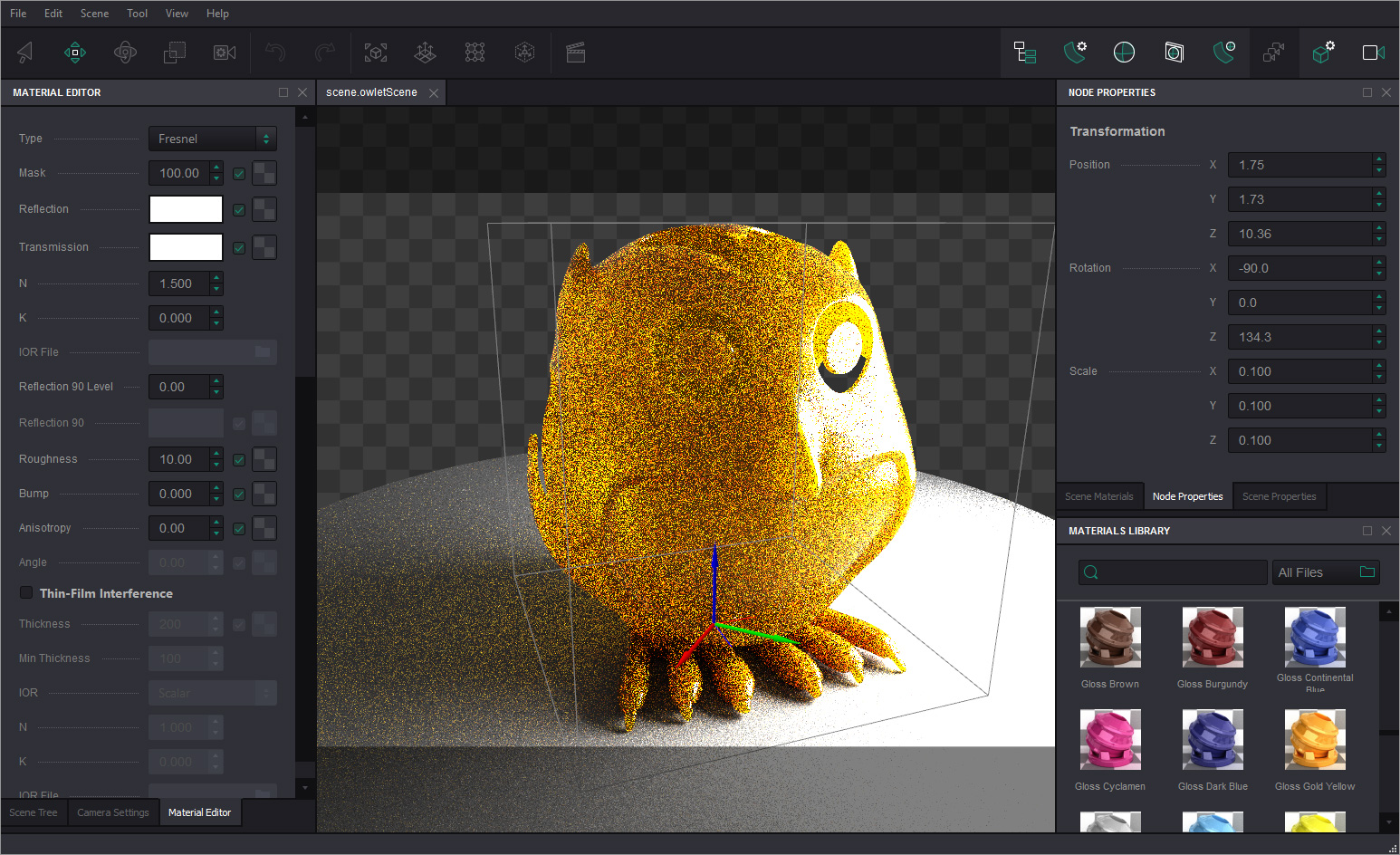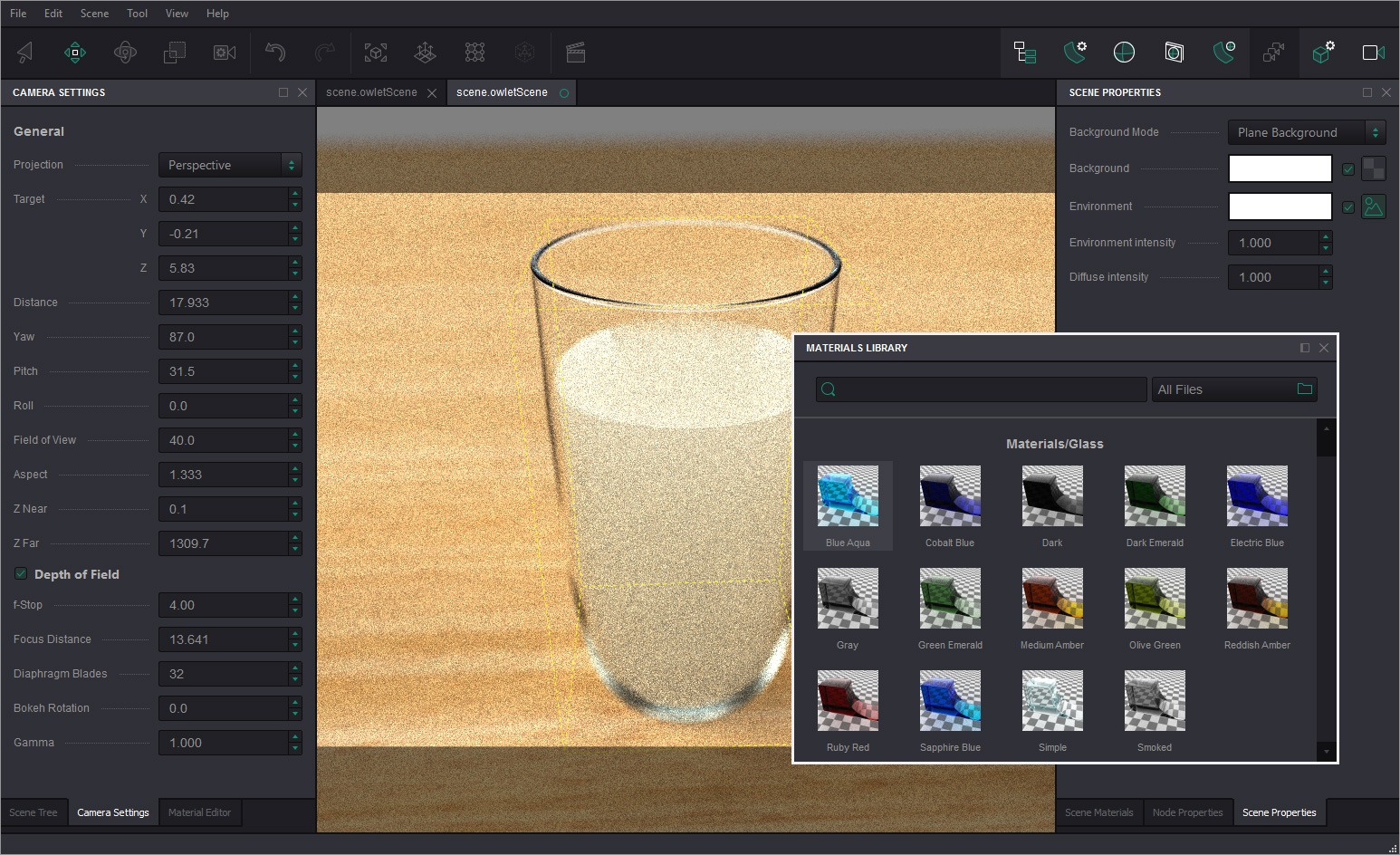Introducing Owlet
22 Dec 2015
OK, here is the reason why you haven’t seen Boxshot updates for a while: please welcome our new product - Owlet. That cute little bird is actually a standalone, unbiased, physically-based, general purpose rendering application. Sounds interesting? Read on…
What Is That?
Since the very first days of Boxshot we had two types of customers: the ones that told us that “Boxshot is too complex”, while the others wanted more options and features. As the target audience of Boxshot includes non-professional users, we tried our best to keep it simple enough for them. Meanwhile, the other half of the user base wanted more, so that’s why we’re now introducing Owlet.

Owlet is a standalone, unbiased, physically-based renderer that takes your 3D files in formats like OBJ, Collada, 3DS, FBX and more, allows you to set up materials and renders photorealistic images for you.
You can read more details here and see some screenshots here.
How Is Owlet Different From Boxshot?
As mentioned above, Owlet is targeting professional users. Owlet features really complex materials with features like subsurface scattering, thin-film interference, anysotropy and so on. Owlet materials are multi-layered, layers can be grouped and have masks, materials can even emit light. Owlet supports image-based lighting, renders caustics and much more. As you may understand, some experience is needed to control that features. We never can do the same in Boxshot.

At the other hand, Owlet is a rendering application, so compared to Boxshot it lacks the built-in shapes. However, you can export shapes from Boxshot or Origami and load it to Owlet for further rendering. We’re still working on that link and will most likely provide a better compatibility between the apps, so you can use Owlet renderer directly from Boxshot.
How Stable Is Owlet?
Being a beta, Owlet can still have minor issues (actually, it does). The reason we release it now is to show it to you and get some feedback. Feel free to try it, to import your scenes, try to render them and share your results with us. Despite the issues, Owlet is stable enough for production usage, so if you are happy with the results you get in the demo - you are more than welcome to use the software in your work. We’ll do ours best to remove the beta tag as soon as possible.
Questions?
You are more than welcome to ask your questions in the comments below. Here are some questions, to start:
- Do I need Boxshot to use Owlet? No, Owlet is a separate application and you can use it for rendering both Boxshot and non-Boxshot models.
- Can I render Boxshot or Origami scenes with Owlet? Yes, you can. Just export them to Collada and load to Owlet for rendering. We’re going to make it easier soon.
- Any sample scenes? There are sample scenes in the gallery page, but you are more than welcome to try your own shapes.
- Do you have a user manual? Not yet, we’re working on it, hope to get it ready during the next month. So far, try our intuitive user interface, see the sample scenes and materials library.
- Why is it standalone? The main reason is that by providing a standalone version we basically support all the 3D editing applications around. All of them can export to OBJ or Collada, so regardless the editor you use, you can still render in Owlet. The second reason is that lots of our users simply buy/download 3D shapes and they need to render it without any 3D editor at all. Owlet can help here, as well.
- Are you going to release a plugin for …? We’ll definitely release plugins for the most popular 3D editors in the future, but the standalone version will always be the first-class citizen and we’ll try to provide the best possible user experience with it.
If you still have any questions, please ask them in the comments below.
Plans?
So far the Owlet roadmap for 2016 is pretty simple: we’re going to get rid of the “beta” tag and add more professional features like multi-channel rendering (depth buffers, alpha channels, reflections and so on). We’re going to provide a tighter integration with our other applications like Boxshot and Origami and then focus on optimizing the application’s performance. The further steps include 3D editors plugins and more various options and features.
System Requirements?
Owlet needs a 64-bit operating system to run. The reason is that Owlet uses a lot of memory for rendering and it can’t get it on 32-bit operating systems. Owlet also needs at least Windows 7 or Mac OS X 10.8. According to our statistics this shouldn’t be a big deal, but do not be surprised.
Owlet is a CPU-based renderer, so the more fast cores you have - the better. The latest Intel Core i7 processors are pretty fast and provide good timings according to our tests.
What About Boxshot?
We’re working on it, as well. Going to release a new version really soon. Long-awaited shapes are also going to be released. Stay tuned.
Finally
Have a nice Holidays and if you have some spare time - have a look at Owlet - it is worth it.
Cheers!